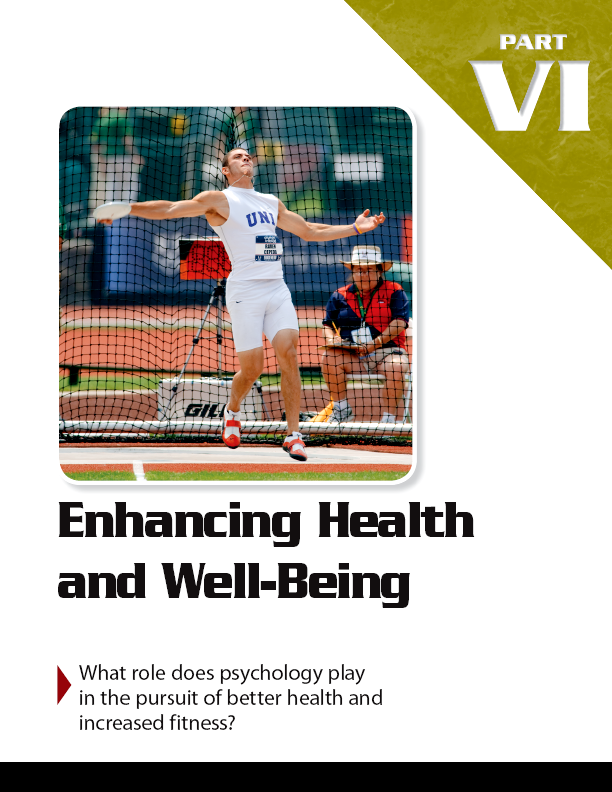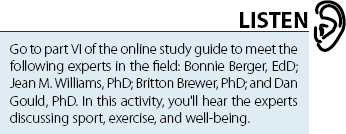

In the past 30 years we have witnessed an increased interest in health, exercise, and wellness, including exercise and health psychology. With greater attention has come better understanding of the roles that psychological factors play in health and exercise. More and more career paths include the psychology of health and exercise as a major component, such as working in a rehabilitation or physical therapy center helping clients recover from injury. In addition, coping with the emotions of being injured or knowing how to help someone dealing with an eating disorder or gambling problem are skills needed by today’s professionals.
This sixth part or stop on our journey begins with two chapters that specifically address exercise. In chapter 17 we examine the psychological benefits of exercise, such as reduced depression and anxiety, and tell you how to maximize these benefits. In addition, exercise and changes in personality and cognitive functioning are discussed along with the use of exercise as an adjunct to therapy. Chapter 18 discusses exercise motivation and ways to keep people exercising regularly. New models, determinants of exercise behavior, and approaches to improving exercise adherence are presented, along with practical tips to improve health and well-being through consistent exercise.
The next three chapters deal with more general health-related concerns. Chapter 19 focuses on the psychological antecedents and consequences of athletic and exercise-induced injuries and the role of psychological factors in injury rehabilitation. Psychological theories of injury are presented, and the stress–injury relationship is discussed. In chapter 20, we examine three of today’s most critical concerns’substance abuse, eating disorders, and gambling. We’ll prepare you to recognize the signs of such problems and to help people with these problems receive the specialized assistance they require. Finally, chapter 21 examines the potential negative effects of athletic and exercise participation, including burnout and overtraining. The chapter deals with the prevalence, causes, treatment, and prevention of burnout and overtraining.

